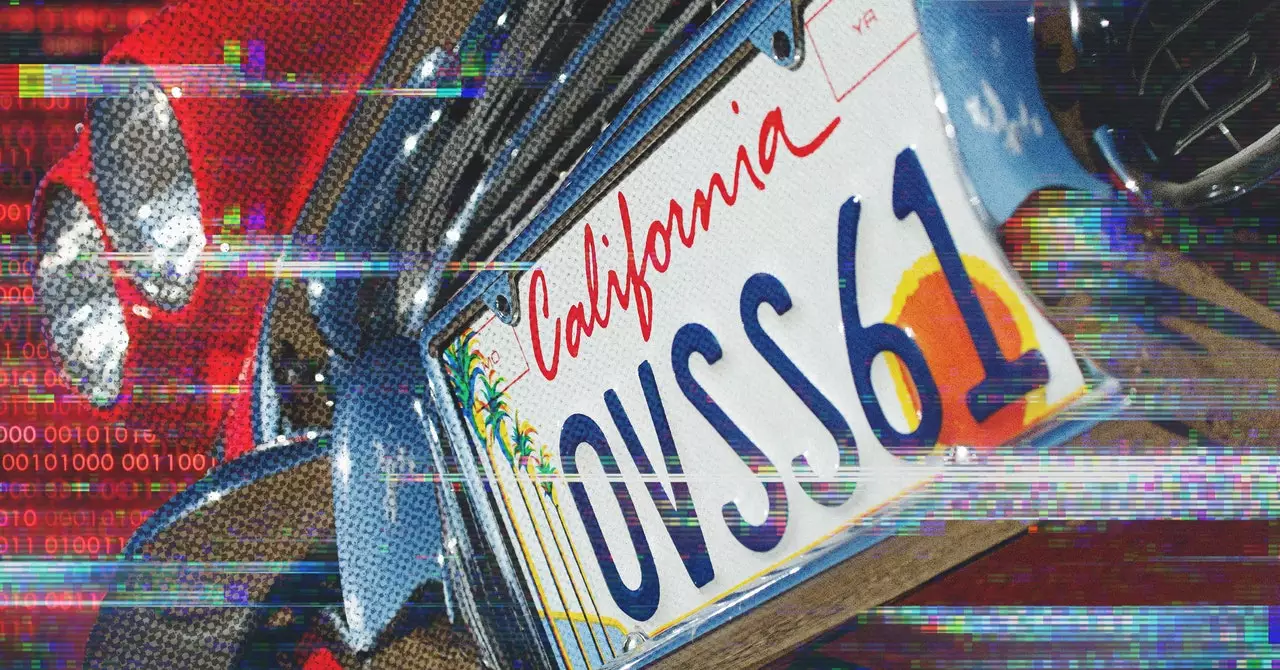In recent years, the advent of digital license plates has brought exciting advancements in vehicle registration and identification. While these high-tech alternatives promise benefits like real-time notifications and customizable displays, they also introduce significant vulnerabilities. The recent uncovering of potential hacking techniques has raised red flags about digital license plate security, necessitating an urgent conversation about their implications for privacy, safety, and regulatory standards.
Digital license plates, often equipped with electronic functionalities that allow for remote updates and tracking, resemble smartphones in their operating principles. However, this technology’s sophistication also introduces a multitude of risks, as highlighted by cybersecurity expert Rodriguez’s insights. If a malicious individual were to acquire the right tools, they might jailbreak these plates—essentially unlocking them to manipulate their functions, much like one could with a smartphone. The process might be as simple as connecting a cable and uploading modified firmware. This ease of access signals a worrying trend where individuals could exploit digital plates for nefarious purposes, including tracking unwitting vehicle owners or altering license numbers unnoticed.
The implications of such hacks extend beyond personal vehicles. Consider a scenario where a parking valet or auto mechanic takes advantage of their physical access to a vehicle to illegally modify a digital plate. This opens up a Pandora’s box of potential misuse. The hacker could take over the vehicle’s identities, surveil any movement, or engage in other illicit activities that could culminate in serious legal ramifications for the car’s actual owner. Rodriguez emphasizes that although digital plates have built-in security measures—like alerts sent to vehicles when a plate is detached—these safeguards can be compromised through tactics like jamming, highlighting the inherent weaknesses in the system’s design.
This is not the first time digital license plate systems have faced scrutiny. In an earlier incident, cybersecurity researcher Sam Curry identified significant weaknesses in the backend of Reviver’s software, the leading digital license plate provider. By exploiting these gaps, he was able to assume administrative control, effectively undermining the system’s integrity. In contrast to Rodriguez’s hardware approach, Curry’s method depended solely on exploiting web vulnerabilities, which Reviver was able to patch quickly, demonstrating the importance of proactive cybersecurity measures in the digital domain.
However, Rodriguez argues that the method he has elucidated presents a different set of challenges, especially since it is likely to resonate with drivers looking to ‘game the system.’ Curry describes a potential scenario tailored for thrill-seekers: altering a license plate number without ever visiting a garage. Such capabilities could incentivize illegal behavior on the roads, enabling a subculture of reckless driving, evasion of law enforcement, and undermining the regulatory fabric governing vehicle identification.
Currently, digital license plates are legal in select states such as California, Arizona, and Michigan, with other states contemplating similar deregulation. However, as these systems continue to spread, regulatory bodies must engage in a thorough investigation of security measures surrounding this technology. The vulnerabilities highlighted by the hacking attempts serve as a clarion call for authorities to create stringent guidelines that incorporate robust cybersecurity standards to mitigate risks.
As digital license plates become more prevalent, it is essential for manufacturers and regulatory agencies to incorporate lessons learned from past vulnerabilities to ensure that security is not merely an afterthought. Stakeholders must adopt a proactive stance to safeguard personal and public safety while ensuring the efficient functioning of transportation networks.
Ultimately, as Curry aptly notes, authorities should operate under the assumption that individuals will indeed try to manipulate these systems. It is imperative to build security protocols and monitoring systems that can preemptively identify and mitigate potential threats, providing a safer driving environment for everyone involved.
While digital license plates promise innovation, their security risks are significant and multifaceted. To fully realize their benefits, a coordinated effort among manufacturers, regulators, and law enforcement will be essential in developing an ecosystem immune to malicious exploitation.

